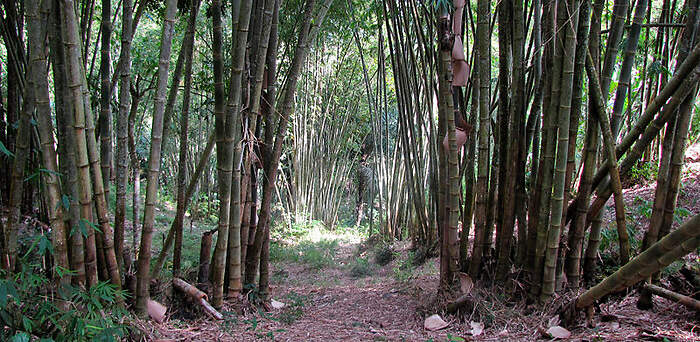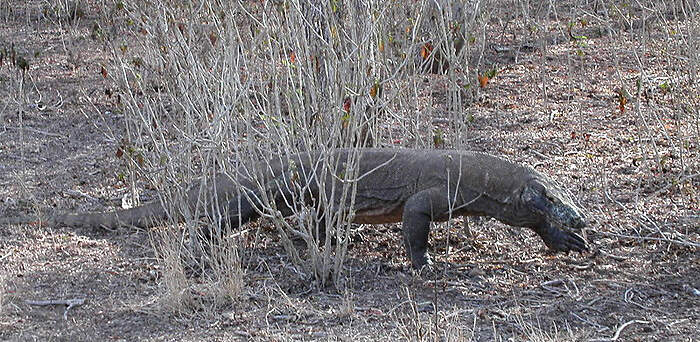BURTON, J., HEDGES, S. & MUSTARI, A. H (2005)
The taxonomic status, distribution and conservation of the lowland anoa Bubalus depressicornis and mountain anoa Bubalus quarlesi.
Mammal Review. 35 (1): 25 - 50.
DOI: 10.1111/j.1365-2907.2005.00048.x
Zusammenfassung:
The anoas are two species of dwarf buffalo, the lowland anoa Bubalus depressicornis and mountain anoa Bubalus quarlesi that are endemic to the island of Sulawesi, Indonesia. The classification of the subgenus Anoa within Bubalus is upheld by assessment of recent genetic and morphological research. The classification of anoas into two species is still debated, but with the absence of significant opposing evidence, this position is adopted here. 2. Information about the distribution of the two species is presented that adds to but largely supports existing reports. However, it is still uncertain whether the two putative species are sympatric or parapatric in their distribution. A review of anoa distribution from historical reports and recent field data (1990s to 2002) highlights their decline throughout Sulawesi, especially in the southern and north-eastern peninsulas. The decline has been attributed to local hunting for meat and habitat loss. Most populations are rapidly becoming fragmented, suggesting that the conservation of viable populations may eventually require management of metapopulations. 3. There is an urgent requirement for conservation efforts to: (i) protect anoas from hunting; (ii) prevent habitat loss in key sites; (iii) complete genetic studies to better determine the number of anoa taxa and Management Units and assess their distribution; and (iv) determine the status of the remaining anoa populations.
burton-bilio
HAGEN, C., PLATT, S.G. & INNIS, C.J. (2009)
Leucocephalon yuwonoi (McCord, Iverson, and Boeadi 1995) – Sulawesi forest turtle, kura-kura Sulawesi.
In: Rhodin, A.G.J., Pritchard, P.C.H., van Dijk, P.P., Saumure, R.A., Buhlmann, K.A., Iverson, J.B., and Mittermeier, R.A. (Eds.). Conservation Biology of Freshwater Turtles and Tortoises: A Compilation Project of the IUCN/SSC Tortoise and Freshwater Turtle Specialist Group. Chelonian Research Monographs No. 5, pp. 039.1–039.7, doi:10.3854/crm.5.039.yuwonoi.v1.2009, http://www.iucn-tftsg.org/cbftt/.
Summary:
The Sulawesi forest turtle, Leucocephalon yuwonoi (Family Geoemydidae), is one of the world’s most enigmatic and poorly known turtles; there are few observations from the wild and its life history remains virtually unstudied. The species is a moderate-sized (carapace length to 278 mm), semi-aquatic omnivorous turtle, that lays one or occasionally two large eggs in each clutch. First purchased from local people in Gorontalo in northern Sulawesi during the late 1980s, large numbers appeared in the commercial turtle trade to China in the early 1990s, and the species was formally described in 1995. The species is endemic to the island of Sulawesi (formerly known as Celebes), Indonesia, and believed restricted to the Central, Gorontalo, and North Sulawesi provinces. Owing to its limited geographic distribution and low fecundity, as well as extensive and unsustainable exploitation for the food and pet trade and substantial habitat loss, we regard L. yuwonoi as a species of grave international conservation concern. Unresolved husbandry problems make captive propagation problematic.
Distribution. – Indonesia. Endemic to Sulawesi, where it occurs in the northwestern portions of the island.
Synonymy. – Geoemyda yuwonoi McCord, Iverson, and Boeadi 1995, Heosemys yuwonoi, Leucocephalon yuwonoi.
Subspecies. – None recognized.
Status. – IUCN 2009 Red List: Critically Endangered (CR A1cd+2cd,C1) (assessed 2000); CITES: Appendix II.
Wallacea
Allgemeines

Bambushain auf Flores, Indonesien © Spencer Weart. Wikimedia CommonsWährend Jahrhunderten wurde über den Grenzverlauf zwischen der orientalischen und der australischen Faunenregion gestritten, weil die Grenze für Säugetiere anders verläuft als z.B. für Reptilien. 
Komodowaran (Varanus komodoensis), Komodo, Indonesien © Thomas Hirsch. Wikimedia CommonsDer walisische Naturforscher Alfred Russel Wallace, der Indonesien von 1854 bis 1862 bereiste, zog die später nach ihm benannte Grenzlinie zwischen Bali und Lombok im Süden und zwischen Borneo und Sulawesi im Norden. Die östliche Grenze von Wallacea wird durch die Lydekker-Linie markiert, die entlang dem australischen Kontinentalschelf verläuft. Zur Region gehören Sulawesi, die Molukken, die Kleinen Sundainseln und die Inseln der Bandasee. Die gesamte Landfläche entspricht in etwa derjenigen Deutschlands. Davon sind etwa 15 % noch einigermaßen intakt und 5.9 % - eine Fläche so groß wie die halbe Schweiz - stehen unter Schutz. Von den rund 10’000 hier vorkommenden Pflanzen sind etwa 1’500 endemisch. Bei den Säugetieren sind es 123 von 201 (61%), bei den Vögeln 249 von 697 (36%), bei den Reptilien 122 von 188 (65%), bei den Amphibien 35 von 56 (63%). Diese Vielfalt ist durch die seit längerer Zeit praktizierte Brandrodung der Trockenwälder und die zu Beginn des 20. Jahrhunderts einsetzende Zerstörung der Regenwälder gefährdet.
Typische Zootiere:
Schwarzflügelflughund (Thoopterus nigrescens),Javaneraffe (Macaca fascicularis), Schopfmakak (Macaca nigra),Malaiische Zibetkatze (Viverra tangalunga), Hirscheber (Babyrousa (babyrussa) celebensis), Timorhirsch (Cervus (Rusa) timorensis); Australische Zwergscharbe (Phalacrocorax melanoleucos), Prachtfruchttaube (Ptilinopus superbus),Weißhauben-, Gelbhauben-, Molukken-, Nacktaugen- und Gelbwangenkakadu (Cacatua alba, C. galerita, C. moluccensis, C. sanguinea, C. sulphurea), Allfarblori (Trichoglossus haematodus), Erzlori (Lorius domicella),Schmalschnabelstar (Scissirostrum dubium); Molukkensegelechse (Hydrosaurus weberi), Komodo-, Blauer Baum-, Quitten und Bindenwaran (Varanus komodoensis, V. macraei, V- melinus, V. salvator), Leistenkrokodil (Crocodylus porosus); Neuguinea-Riesenlaubfrosch (Litoria infrafrenata); Dreihornkäfer (Chalcosoma atlas).
![]()
Nationalparks und andere Schutzgebiete
![]()
Literatur:
MITTERMEIER, R.A., MYERS, N. & GOETTSCH-MITTERMEIER, C. (1999)
PFEFFER, P. (1969)
Zurück zu Lebensräume in Süd- und Südostasien
Weiter zu Philippinen
